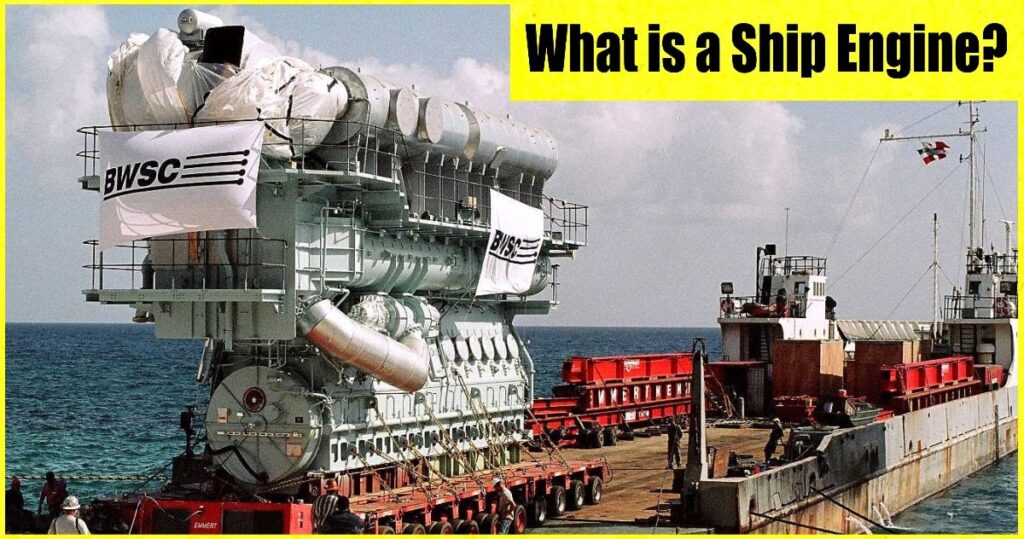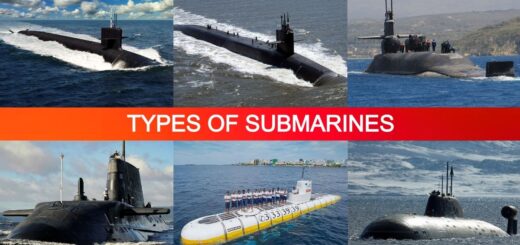Ship Engine | What is a Ship Engine? | How Ship’s Engine Works? | Types of Ships Engines

Ship Engine Introduction:
Ship Engine | What is a Ship Engine? | How Ship’s Engine Works? | Types of Ships Engines: – A ship engine, otherwise called marine propulsion, is basically an engine suitable for boats and large ships. Many kinds of ship engines are accessible, contingent upon what a vessel needs and the operator’s necessities. ( Types of Ships )
What is a Ship Engine?
A ship engine is a sort of engine that drives a ship or boat through the water. It is normally utilized for propulsion however can likewise generate electricity or combine the two.
There are unique sorts of an engine, including steam, diesel, and gas turbines. The principal parts of a ship’s engine are the combustion chamber, the turbine, the reduction gears, and the propeller shaft.
How Ship’s Engine Work?
Ship engines or Marine engines on ships are responsible for the propulsion of the vessel starting from one port and then onto the next. Whether it’s of a small ship utilized the coastal areas or of a massive one voyaging global waters, a marine engine of either 4-stroke or 2-stroke is fitted onboard ship for the propulsion purpose. Ship engines or marine engines are heat engines utilized for converting heat, which is generated by burning fuel, into useful work, for example, developing thermal energy and transforming it into mechanical energy. The engines utilized onboard ships are internal combustion engines, wherein, the combustion of fuel takes place inside the engine cylinder and the heat is generated post the combustion engine.
Ship Engine Working Principle:
IC engines are for the most part utilized for marine propulsion and power generation purpose. The working of the ship engine can be explained by the following procedure:-
- The fuel is infused at a controlled amount at high pressure.
- A combination of fuel and air is compressed inside the engine cylinder with the assistance of a piston, which brings about the explosion of the mixture when pressurized due to compression. Accordingly, heat is generated which increases the pressure of the burning gas.
- The sudden increase in the pressure pushes the piston downwards and transmits the transverse movement into the rotating movement of the crankshaft utilizing connecting rod arrangement. The explosion is rehashed consistently for keeping up with the power output contingent on the type of marine engine and its utilization.
- The crankshaft is connected through a flywheel, either to the alternator or to a propeller arrangement for accomplishing the mechanical work. To get a persistent rotation of the crankshaft or driving rod the explosion must be rehashed persistently.
- Before the next explosion, the used gases are drawn out from the cylinder through an exhaust valve, and fresh air is supplied, which assists with pushing the used gas and furthermore provides fresh air for the next ignition combustion process.
Marine Engine Types:
The two basic types of the ship or marine engines are –
- 4 stroke engine
- 2 stroke engine
A 4-stroke engine can be installed on the ship to create electrical power and to drive the ship. This engine takes 4 cycles to finish the transfer of power from the combustion engine to the crankshaft.
The Events Taking Place in the I.C. Engine are as Follows:-
- Suction stroke for taking the fresh air inside the chamber – which is the downward movement of the cylinder.
- Compression stroke to compress the air-fuel combination – which is an upward movement of the piston.
- Power stroke – in which the explosion happens and the piston is pushed downwards.
- Exhaust stroke – which is an upward movement of the piston to draw out utilized gases.
The four events are completed or finished in four strokes of the piston. At the top of the cylinder head, an inlet and exhaust valve is fitted to attract fresh air and to oust the used exhaust gas. Both, the valves and the fuel pump are operated utilizing a camshaft, which is driven by a crankshaft utilizing a gear drive. In a four-stroke engine, the camshaft runs at half of the speed of the crankshaft. The crankcase is open to the piston liner arrangement, which aids the lubrication of the liner.
The 2-stroke engine is utilized for vessel propulsion and are bigger in size when compared with the 4-stroke engines. In this engine, the complete sequence is completed in two cycles for example.
Solution and Compression Stroke
Which is the upward movement of the piston to draw fresh air inside and to compress the air-fuel combination.
Power and Exhaust
Which is the downward movement of the piston because of an explosion inside the chamber followed by the removal of exhaust through the exhaust valve fitted on the top of the cylinder. A stuffing box is utilized what separates and seal the crankcase against the combustion chamber.
Image Source: – blue-growth











